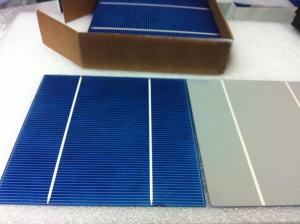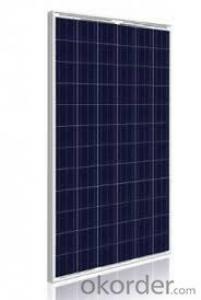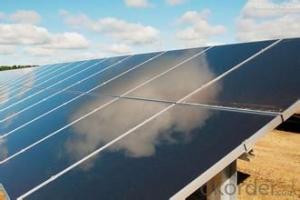Polycrystalline Solar Cells 2BB/3BB with Long-term Electrical Stability
- Loading Port:
- Tianjin
- Payment Terms:
- TT or LC
- Min Order Qty:
- 4200 watt
- Supply Capability:
- 600000 watt/month

- OKorder Service Pledge
- Quality Product
- Order Online Tracking
- Timely Delivery

- OKorder Financial Service
- Credit Rating
- Credit Services
- Credit Purchasing
Specifications of Poly Solar Cells
Format | 156 mm × 156 mm ± 0.5 mm |
Thickness- | 210μm ± 40 μm |
Front (-) | 1.5mm bus bars (silver),blue anti-reflection coating (silicon nitride) |
Back (+) | 2.5mm wide soldering pads (silver) back surface field (aluminium) |
Temperature Coefficient of Poly Cells
Voc.Temp .coef.%/K | -0.351%/K |
| Isc.Temp .coef.%/K | +0.035%/K |
| Pm.Temp. coef.%/K | -0.47%/K |
Electrical Characteristic of Poly Cells
Efficiency | Efficiency | Pmax(W) | Average | Impp(A) | Vmpp(V) | Isc(A) | Voc(V) |
1720 | 17.20~17.40 | > 4.186 | > 4.186 | 7.94 | 0.528 | 8.515 | 0.626 |
1700 | 17.00~17.20 | 4.137~4.186 | 4.161 | 7.905 | 0.525 | 8.482 | 0.624 |
1680 | 16.80~17.00 | 4.088~4.137 | 4.113 | 7.863 | 0.521 | 8.402 | 0.623 |
1660 | 16.60~16.80 | 4.040~4.088 | 4.064 | 7.825 | 0.519 | 8.358 | 0.622 |
1640 | 16.40~16.60 | 3.991~4.040 | 4.015 | 7.769 | 0.517 | 8.304 | 0.621 |
1620 | 16.20~16.40 | 3.942~3.991 | 3.967 | 7.713 | 0.514 | 8.248 | 0.619 |
1600 | 16.00~16.20 | 3.894~3.942 | 3.918 | 7.67 | 0.511 | 8.204 | 0.616 |
Advantages of Poly Solar Cells
1. High efficiency and High power.
2. Long-term electrical stability.
3. Lowest price and Fastest delivery.
4. Good quality and good service.
5. Bulk supply
6. Good Warranty
7. Big Sale
8. More than 25 years on the lifetime.
Usage and Applications of Poly Cells
Solar cells are often electrically connected and encapsulated as a module.
Photovoltaic modules often have a sheet of glass on the front (sun up) side, allowing light to pass while protecting the semiconductor wafers from abrasion and impact due to wind-driven debris, rain, hail, etc. Solar cells are also usually connected in series in modules, creating an additive voltage.
Connecting cells in parallel will yield a higher current;our solar cells have passed IEC Certification.
With high quality and stable quality. Our Cells can greatly improve the performance of Solar Modules.
Packaging & Delivery of Poly Cells
Carton Box Package and Deliver by air. It should be noticed that it should be avoid water, sunshine and moist.
Factory Picture of Poly Cells
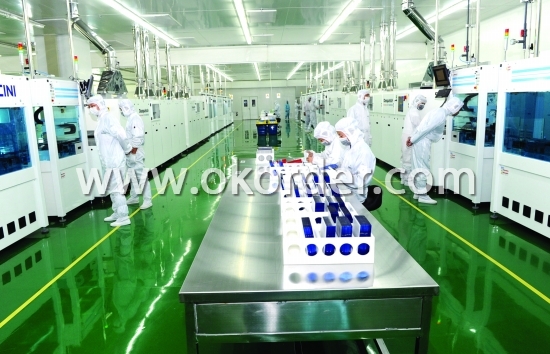
Package Picture of Poly Cells
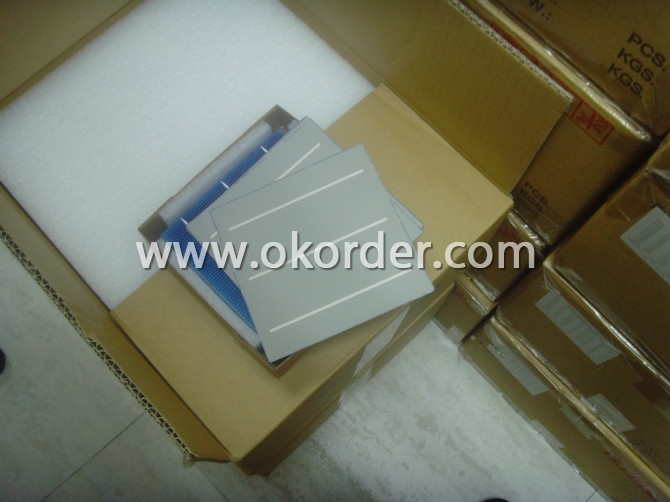
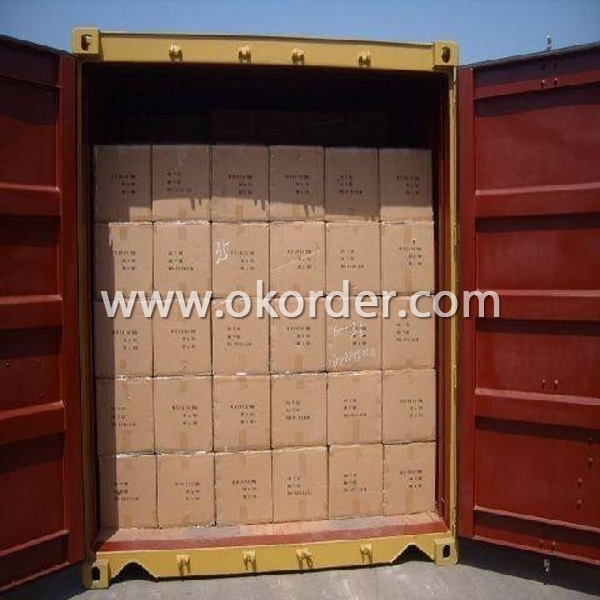
Polycrystalline solar cells 2BB/3BB combines the high conversion efficiency monocrystalline silicon cells and preparation of amorphous silicon thin film materials as well as long-life battery, etc. relatively simplified new generation of batteries, the conversion efficiency is generally about 12%, slightly lower than the silicon solar cells, there is no obvious efficiency recession, and may be prepared on an inexpensive substrate material, the cost is much lower than silicon cells, and more efficient than amorphous silicon thin film batteries.
From the production cost, than monocrystalline silicon solar cells cheaper, simple materials, saving power consumption, lower overall production costs, and therefore get a lot of development. In addition, Polycrystalline solar cells 2BB/3BB battery life is also shorter than the single crystal silicon solar cells.
Monocrystalline silicon solar cell production requires large amounts of high-purity silicon material and manufacturing process complexity of these materials, power consumption is large, the total production cost of solar cells has over one-half. Coupled with cylindrical silicon rods drawn, sliced wafer production of solar cell is composed of low solar plane component. Therefore, since the 1980s, some European and American developed countries put Polycrystalline solar cells 2BB/3BB.
Has been the focus of a single crystal to polycrystalline direction, mainly due to; [1] can supply less and less solar cell material end to end; [2] in terms of solar cell, a square substrate is more cost-effective, and by casting method polysilicon direct solidification method can be directly obtained rectangular materials; the production process [3] polysilicon continue to make progress, automatic casting furnace each production cycle (50 hours) can produce over 200 kg ingots, grain size reaches cm level; [4] Since the last decade of research and development of single-crystal silicon technology quickly, which technology has also been applied to the production of polycrystalline silicon cells, such as selective etching the emitter, back surface field, corrosion suede, surface and bulk passivation , thin metal gate electrode, using screen printing technology allows the width of the gate electrode is reduced to 50 m, height of 15 m or more, rapid thermal annealing technology for polysilicon production process can significantly shorten the time, single-chip thermal process time can be less than a minute to complete, using the technology in the 100 cm2 polycrystalline silicon sheet made cell conversion efficiency over 14%. According to reports, the 50 to 60 micron substrate made of polysilicon cell efficiency of over 16%. The use of mechanical groove, screen printing technology in 100 square centimeters crystal efficiency more than 17%, no mechanical groove in the same area on the efficiency of 16%, using buried gate structure, mechanical groove in the 130 cm2 polycrystalline on the cell efficiency reached 15.8%.
- Q:How do people price solar cells? Is it based on a specific way of calculating the cost of solar cells?
- The solar cells price is high, because it will take at least 8 years to recover the cost of a the solar cell power supply system.
- Q:Briefly explain why solar cells are made into components
- The electrical performance parameters of solar cells are: voltage, current, capacity, type, charging rate and so on. The voltage parameter of the battery refers to the operating voltage of the battery, that is, the voltage that can be supplied to the device. Current, refers to the maximum discharge current of the battery. Capacity, refers to the total discharge power of the battery, with An / hour (A / H) said.
- Q:What should I know about the Crystalline silicon photovoltaic cells?
- Crystalline silicon (c-Si) is the crystalline forms of silicon, either multicrystalline silicon (multi-Si) consisting of small crystals, or monocrystalline silicon (mono-Si), a continuous crystal. Crystalline silicon is the dominant semiconducting material used in photovoltaic technology for the production of solar cells.
- Q:What diode does the solar panel use?
- It is necessary to allow the light after the effect of electricity into the battery and must prevent the operation of the PV components due to partial damage.
- Q:Are bulk solar cells better than the normal solar cells?
- Bulk solar cells are not absolutely better than normal solar cells, it is decided by what kind of material.
- Q:I am working on research for the usage of solar cells, where can I find more news of solar cells?
- www.solardaily could be the website that you are looking for.
- Q:Doping and Diffusion Principle in Solar Cell Processing
- Doping in semiconductors refers to the incorporation of phosphorus or gallium in semiconductor silicon to obtain n-type or p-type semiconductor materials, thereby fabricating a wide variety of semiconductor devices.
- Q:What do the solar cell suppliers provide once we purchase the order from the solar cells from them.
- The good solar cells suppliers do not only sell you the solar cells products, they also give you very useful suggestions to help you install it.
- Q:What is the working principle of a solar cell?
- It's not easy to explain in a simple way.
- Q:What is the window material in the solar cell? what's the effect?
- Because the window layer near the surface, the defect is very much, if the absorption of light generated photogenerated carriers, then it is easy to die, do not contribute to the battery output, the absorption of light are wasted, reducing battery efficiency.
1. Manufacturer Overview |
|
|---|---|
| Location | Zhejiang, China |
| Year Established | 2008 |
| Annual Output Value | Above US$ 320 Million |
| Main Markets | Australia; Asia; South East Asia; South America; North America; Europe; Africa |
| Company Certifications | ISO 9001:2008; CE; TUV; UL |
2. Manufacturer Certificates |
|
|---|---|
| a) Certification Name | |
| Range | |
| Reference | |
| Validity Period | |
3. Manufacturer Capability |
|
|---|---|
| a)Trade Capacity | |
| Nearest Port | Ningbo, China |
| Export Percentage | 45% - 50% |
| No.of Employees in Trade Department | 200-300 People |
| Language Spoken: | English; Chinese |
| b)Factory Information | |
| Factory Size: | Above 10,000 Square meter |
| No. of Production Lines | 8 |
| Contract Manufacturing | OEM Service Offered; Design Service Offered |
| Product Price Range | Average |
Send your message to us
Similar products
New products
Hot products
Hot Searches
Related keywords
You Might Also Like



